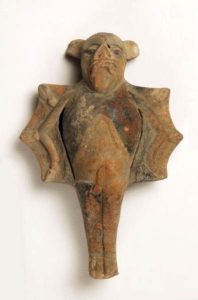The Natural World
Maya artists produced renderings of types of animals which were significant to the members of society as food, pets or pests. It is difficult to determine if animals depicted on ceramic vessels are parts of purely naturalistic scenes, are related to stories whose texts have not survived from the Classic period or are supernatural creatures. Some of these animals probably represent counterparts of humans, or wayob. Among the present-day Tzotzil Maya of Chiapas it is believed that every individual has an animal counterpart which must be protected from harm in order to stay alive. A person’s status in society determines the kind of way he or she possesses.
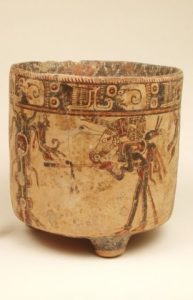
This vase was found with the jade pendant in the “Palace Life” section of the exhibit, in a tomb located in an area inhabited by the Lenca, neighbors of the Maya. The theme of blowgun hunters and cormorants is also common in Maya ceramics and demonstrates a significant amount of symbolic sharing across cultural boundaries. Cormorants were associated with the supernatural because they live in three worlds: they fly in the sky, nest on the earth and swim in the water. Although the Hero Twins were blowgun hunters, this scene probably refers to a myth other than the Popul Vuh. Pseudoglyphs encircle the rim.
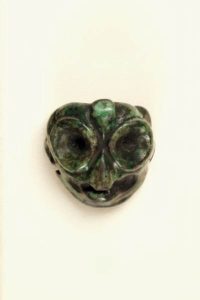
Carved jade ornament in the form of an owl head.
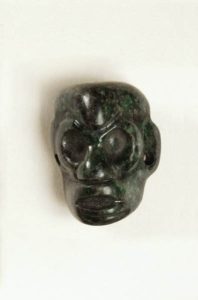
Carved jade ornament in the form of a monkey head.
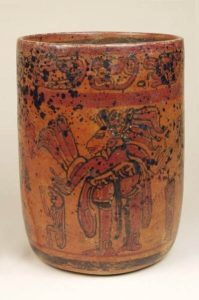
Interpretation of the the vase’s symbolism is uncertain. The glyph band below the rim is probably the Primary Standard Sequence. Four human figures parade around the vase, one accompanied by an erect mammal and another accompanied by an insect. Two humans carry staffs that are similar to maize stalks, one human has a less elaborate staff and the fourth has no staff.

The glyph repeated below the rim seems to be muluc day sign or a variant of “jade.” The bat is a frequent motif of pottery painters from Alta Verapaz. The profiles of bat heads on this vase may refer to supernatural Camazotz’ of the Popul Vuh or may be the emblem of a social group or ruling family.
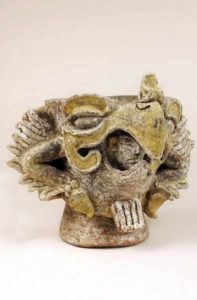
The fusion of human and bird characteristics may represent the relationship between an individual and his way, or animal counterpart.
